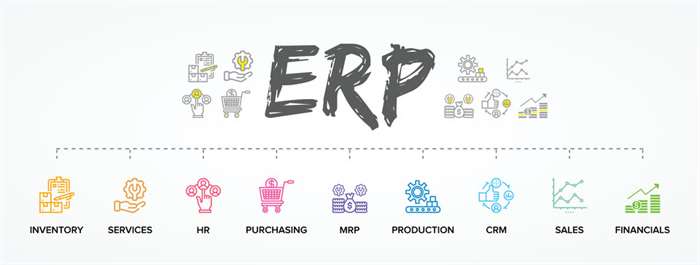Iaas Vs Paas Vs Saas Vs Dbaas
Content
This eBook is a comprehensive guide to SaaS management containing inspiring industry voices, practical advice, deep insights, and sound knowledge on this critical field of IT management. Topics range from the share of SaaS in IT landscapes, how SaaS is purchased, SaaS-related challenges facing EAs, and how SaaS is managed and by which teams/departments. Imagine if your email server went under because you forgot to update it and you went days without email? Any platform updates, security patches and general maintenance to their store would be the responsibility of the merchant. Scalable – you can choose from various tiers of resources to suit the size of your business.
With PaaS, multiple users have access to the same resources, which poses additional security risks. Having all the facilities at hand, engineers can focus on designing apps online, with no concern about updates, data storage or system management.
Expenses that depend on consumption — typically, IaaS clients pay for the amount of virtual machine space they rent on an hourly, weekly or monthly basis. Infrastructure as a service is forecast to be the fastest growing segment with 27.5% growth in 2019, followed by platform as a service with 21.8% growth. Platform as a Service gives you everything available with IaaS, plus the operating system and databases. You may need to have extra training for your team to help them better manage the infrastructure.
Examples Of Common Cloud Services
PaaS solutions are an excellent asset for agile software development and deployment in large teams with remote workers. SaaS solutions target end-users who need a reliable and straightforward software solution that runs in a web browser.
- There’s nothing to install or maintain — all you have to do is login and start using the software.
- You can enjoy effortless customization with simple point-and-click steps and align your application with your evolving business needs without modifying the app’s core functionality.
- By renting virtual infrastructure, companies can instead use their resources for acquiring and managing physical tools for business growth and strategic development.
- Keep reading to find out what each term means, the differences between them, and how to choose the best model for your business.
Below, you can see how the public cloud computing market share has developed over the course of three years as well as its projection for 2022. The leading service in the cloud computing industry is SaaS with a 39.4% cloud computing market share in 2021, followed by the fastest-growing cloud service IaaS with 20.9%, and PaaS with 18.7%. SaaS is delivered as a fully functional service and can be accessed remotely via any web browser, allowing clients to work from anywhere. The users connect to the app through a dashboard or API and rely on the SaaS provider when it comes to bug fixes, middleware, support, and any potential technical issues. This results in less responsibility but also less control for the end-user.
Platform As A Service
Others still may need whole cloud infrastructure resources for building and managing their network, servers, apps, operating systems, and storing data. Connecting your various cloud service models with your on-premises and public cloud resources can be a challenge. No matter which models you choose, starting with a foundation of Intel® technology for your on-premises infrastructure gives you compatibility with public cloud services. That’s because Intel technology is integrated and optimized throughout public cloud service providers.
We’ll also help you understand the key differences among SaaS, PaaS, and IaaS—so you can best choose one for your organization. Startups and small companies may prefer IaaS to save money and time. The set of features is greatly expanded in the Premium version. In addition to those mentioned earlier, there are more tools to operate with various attachments, broader integrations, and collaboration features. When it is about IaaS vs PaaS vs SaaS, it is imperative to know what you manage vs what the vendor manages. As a third-party service operates the infrastructure, you will be able to focus on other work. One of the most relatable SaaS examples is Google Docs, which allows creating and sharing documents, or Dropbox that enables file sharing and download over the network.
Cloud is a platform that hosts a pool of computing resources over the Internet as a convenient, on-demand utility to be rented on a pay-as-you-go basis. Hence all Clouds are basically virtualized data centers made up of computation and storage resources. As a Snowflake customer, easily and securely access data from potentially thousands of data providers that comprise the ecosystem of the Data Cloud. Also engage data service providers to complete your data strategy and obtain the deepest, data-driven insights possible. SaaS users tend to be businesses, individuals, or IT professionals.
Cloud services such as #PaaS, #SaaS and #IaaS compete with on-premise solutions. We offer our solution in the cloud AND on-premise so we have taken the time to explain how you can decide which is best for you > https://t.co/f3ips3Jso5 #CloudSecurity #IAM #CIAM
— Ubisecure (@ubisecure) December 13, 2021
The savings in PaaS often come from consolidating resources, and reducing—or in many cases, eliminating—redundant work done by employees. PaaS also offers customers the ability to rapidly host, difference between iaas vs paas vs saas test and produce applications. When a developer wants to test an application, cloud platform solutions can instantly deliver a complete application environment ready for whatever is needed.
Latest Products
However, providers of the IaaS manage the servers, hard drives, networking, virtualization, and storage. Some providers even offer more services beyond the virtualization layer, such as databases or message queuing.
TPT Global Tech’s “Digithrive” Subsidiary Established Within Its Saas Division To Focus On Fintech Activity Such As Crypto, Mobile Digital And Internet Banking Technologies – Yahoo Finance
TPT Global Tech’s “Digithrive” Subsidiary Established Within Its Saas Division To Focus On Fintech Activity Such As Crypto, Mobile Digital And Internet Banking Technologies.
Posted: Mon, 13 Dec 2021 19:10:00 GMT [source]
This is generally available on a wide range of devices and anywhere globally, making SaaS more accessible than the traditional business software installation. In a way, we can say, “Anywhere you go, the cloud follows,” while offering economies of scale in turn. SaaS is the most popular and known form of cloud service for consumers. User is able to access the service via multiple platforms such as laptop, desktop, mobile etc.
What Are The Differences Between Iaas, Paas, And Saas?
If the vendor has not provisioned convenient migration policies, switching to alternative PaaS options may not be possible without affecting the business. PaaS is much more cost-effective than maintaining a dedicated in-house platform. The result is incredibly flexible as the charges only include compute, storage, and network resources consumed. PaaS provides a more-or-less ready-made cloud-based framework upon which the application can be developed or hosted. In this case, the PaaS product is a foundation for further building of a specific request, the one that includes all the functional elements and makes it work the way it should.
More and more organizations will build their business apps online with PaaS, or Platform as a Service. Platform As A Service is a cloud delivery model for application composed of services managed by the third party. It provides elastic scaling of your application in which it allows developers to build application and services over the internet and deployment include public, private and hybrid.
Iaas Vs Paas Vs Saas: Picking The Best Cloud Computing Service Model
An all-inclusive cloud service model that provides compliance, security, and maintenance as part of the expense. With SaaS, you don’t require IT employees for downloading and installing apps on every separate PC. Vendors can use SaaS for handling every possible technical risk like server, data, middleware, and storage. This causes organized supports and maintenance for businesses. PaaS tools are accessible by multiple users via the same development application.

This bodes very well for the “big three” providers, AWS, Azure and GCP. You now know the basics of SaaS, PaaS, and IaaS, but that doesn’t mean you have to navigate the world of cloud services on your own. Not all SaaS applications integrate well with other apps or with existing systems, and most SaaS companies offer very limited integration support. Easily build, test, and deploy custom apps and scale your development resources up and down as needed. If you have legacy apps and systems, integration with the new cloud-based architecture can be difficult and doesn’t always work. To simplify buying and managing enterprise software, Red Hat Marketplace offers automated deployment of certified software on any Red Hat OpenShift cluster. What SaaS saves you in time and maintenance, however, it could cost you in control, security, and performance, so it’s important to choose a provider you can trust.
All three are cloud computing services and are designed to address specific requirements of different B2B companies. You, for example, need those cloud business and productivity solutions offered by vendors as SaaS to keep your young company running from day to day and helping it grow. Other companies such as those that develop software may require a cloud-based platform that they can use to create custom apps.

Software updates, bug fixes, and general software maintenance are handled by the provider and the user connects to the app via a dashboard or API. There’s no installation of the software on individual machines and group access to the program is smoother and more reliable. In this article, we’ll cover each type of model, the benefits, and how you can use any or all of them to create a cloud-computing environment that meets all of your needs. We’ll also take a look at some examples of each to make it a little easier to understand. Software-as-a-Service, Platform-as-a-Service, and Infrastructure-as-a-Service share the common goal of delivering cloud-based resources to clients when they need them. However, as you have learned, these three models come with unique features and functionalities. You can leave tasks like tracking, maintaining, updating, and re-integrating components to the vendor and concentrate on building your app.
The primary differences of SaaS, PaaS, and IaaS stem from what the vendor manages and what the end-user manages. SaaS tools may be incompatible with other tools and hardware that are already in use at your business. This is sharepoint typically included in a SaaS subscription or purchase. Developers can easily customize and update apps without thinking about software upkeep on the backend. Organizations have complete control over their infrastructure.
Your security options may be limited as customers may not be able to deploy services with specific hosting policies. Platform-as-a-service handles cloud-related operations, such as managing operating systems, providing virtualization, maintaining servers, serving storage units, and overseeing networking. At the same time, the customer can focus on the development of the application. Platform-as-a-service is one of the service models of cloud computing.
Saas vs PaaS vs Iaas: Choose the Right Cloud Computing Service Modelhttps://t.co/LZBYMq5akB#SaaS #laaS #PaaS #cloudcomputing #cloudservices #softwareservices #clouds #services #cloudsecurity #security #differencebetween
— MobMaxime (@MobMaxime) December 6, 2021
Software-as-a-Service was around even before companies started migrating to the cloud. Best examples are web-based email services like Outlook or Gmail. Below are a few SaaS providers you’ll probably be familiar with. Tony Hou is an experienced ecommerce business owner and consultant.






